Ingredients: Vit C powder (5 to 20 percent) Water, Glycerin (Optional) Ferulic acid (Optional) Vit E (Optional)
Where to buy Homemade Vitamin C Serum in the USA?
If you can’t find where to buy Homemade Vitamin C Serum near you, we can easily help you find a place where you can quickly and cheaply buy.
You can click on “check price” button and find out where to buy to buy Homemade Vitamin C Serum.
How to find the best price on Homemade Vitamin C Serum?
We are always ready to offer you recommendations on where to buy Homemade Vitamin C Serum at one of the best price on Internet.
Please, feel free to follow the “check price” button to find price we chose for Homemade Vitamin C Serum .
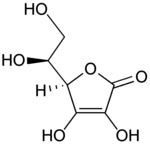
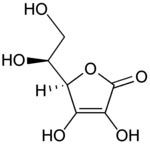
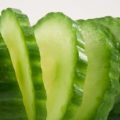
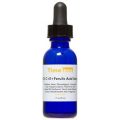
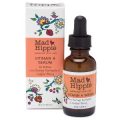
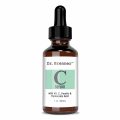
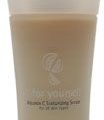


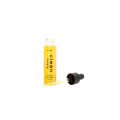
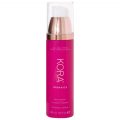
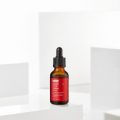

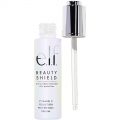

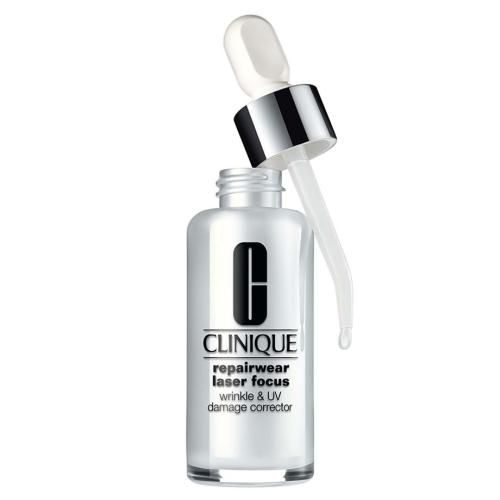

kindDotterel4
I see real results with my home made vitamin c serum, I mix L ascorbic acid + purified water, using a cotton round I wipe my face and neck, my face is glowing in the morning, best treatment for large pores, skin discolouration, and age spots, this is a stable for me.
fondDingo7
I actually add vitamin c crystals to organic alcohol free witch hazel and it is amazing. Try it, it’s soooo cheap, very easy and has absolutely changed my skin texture in just two months.
fondSeafowl3
I’ve been using vitamin C for many years now and firmly believe it’s one of the best anti-aging ingredients currently available. It promotes collagen synthesis (to repair damaged skin) and some studies have shown it can also protect the skin from UV damage (NOTE: it is NOT a substitute for sunscreen!). It has brightened my skin and kept most of the wrinkles away so far.
Ascorbic acid is the most studied and effective form of vitamin C for skin. The product I use to make my serum is The Ordinary 100% L-Ascorbic Acid Powder. There may be cheaper vitamin C powders available, but I trust the quality of Deciem’s products and their 20 g jar (at $5.80) should last the average user at least a few months, if not longer. It is an ultrafine powder that looks and feels like cornstarch or powdered sugar and dissolves very quickly. It comes in a tinted glass jar but to keep the product fresher and minimize contamination, I transfer what I use into a smaller jar/container (a Sephora sample container comes in handy for this).
You can mix it with water or water-based products, such as a serum or hydrating toner. A good product to mix it with is The Ordinary’s Resveratrol 3% + Ferulic Acid 3% serum. Ferulic acid works to stabilize vitamin C, while resveratrol (the antioxidant found in grapes and wine) provides the skin with another source of antioxidants.
Whatever you use to mix it with, remember not to go overboard with the vitamin C. The solution doesn’t need to be any higher than 20% vitamin C for maximum absorption – any higher than that and you may risk irritating your skin.
In my case, I mix 1 part powder with 4 parts water and apply before using heavier serums and lotion. There may be some mild stinging at first. Those with sensitive skin who have never used vitamin C before may want to start with a weaker concentration before gradually increasing the amount as their skin acclimatizes.
I prefer to mix a fresh batch daily, but you can premix a larger amount and store for about a week in a tinted bottle if you wish. Keep away from sunlight and watch for color changes which means it has oxidized and is no longer good for your skin.
The Ordinary’s product comes with a little plastic spoon, but if you’re looking for some smaller and durable spoons to measure the vitamin C powder, you might consider the Norpro Mini Stainless Steel Measuring Spoons (available at Amazon) which come in a set of 5 and labeled ‘tad’, ‘pinch’, ‘dash’, ‘smidgen’, and ‘drop’. The smallest three measure 1/16, 1/32 and 1/64 teaspoons.
One last warning: be sure to wash your hands thoroughly after using or the vitamin C may oxidize and stain your fingernails a dull orange color!
madBobolink0
i just told the pharmacy here in Germany to make it. I told them the ingredients and percentage,they mixed it,gave it in a brown bottle and a dispenser (this drop thing i forgot the name of) and i just payed 8 Dollars,can recommend it like that. they added Propylenglycolum to make it last 6 months. hassle free and easy,serum is great
mereCaviar7
I currently use Nature’s Bounty vitamin c and d softgel capsules. Since it’s already in a liquid form, I simply squeeze it out of the capsules and rub onto my face. I leave it on for a few minutes before washing it off. I’m way to lazy to create my own serum from a powder form of vitamin c, so I was so happy to find vitamin c in softgel form. Hopefully someone can confirm (or disprove) the use of acsorbic acid from Nature’s Bounty in softgel form.
brainyPoultry5
more % vitamin C concentration is better performance , but it may cause irritation for someone , so 10% is appropriate level that vitamin C is really can work well and also safe on your skin , by the way , pls avoid to use Vitamin c together with Retinol , AHA or BHA , you can use vitamin in daytime and use Retinol , AHA , BHA in nighttime ,
mellowLizard1
I have been making my own Vitamin C serum with ferulic acid and vitamin E for a couple of years at 20% concentration. It seems to work fairly well at keeping the wrinkles and dark spots at bay. I don’t think the homemade works quite as well as skinceuticals CE Ferulic but the price is so much better. It also doesn’t have as nice of a consistency, feels kind of sticky and doesn’t blend under makeup as well. The thing is, I also color my hair but can’t seem to keep the color on the hairline. I just realized it is due to using the serum and getting a little bit on my hairline when I apply it to my forehead. Ascorbic acid removes hair dye! I bought Ion hair color remover at Sally’s and when I got home I noticed the main ingredient is ascorbic acid. I’m going to return the item because I just used some of my supply of l-ascorbic acid to remove my hair color that turned out too green. It worked great and didn’t cause any damage. So be careful when applying topical vitamin c serum close to your hairline if you have colored hair. It is effective at removing hair color.
panickyPepper4
I’ve gone threw alot of trial & error in making Vit C serums.
● I learned to use a solubilizing agent (like Polysorbate) instead of an emulsifier
● If the water is lower than room temp the vitamin c will never fully dissolve
● Using Vit C serum everyday & for extensive periods of time will make your skin insanely sensitive
● Since I wont be using it everyday I really need to use Ferulic Acid & Vit E to help my serum last longer than a month, without it turning all yellowy/oxidized
● Preservatives are a must since certain bacteria & mold can still live in acidic conditions
After many tries I’ve finally made a serum that I love.
Vitamin C Serum recipe:
POWDER PHASE
*Vitamin C…(15%) – local health food store
*Vegemoist…(7%) – Ingredientstodiefor
[it helps to prevent the Hyaluronic Acid from clumping & helps to dissolve the Vit C]
*Hyaluronic Acid…(0.5%) – Amazon/Lotioncrafter
WATER PHASE #1
*Ferulic Acid…(0.5%) – Lotioncrafter
[helps your serum to last a month or more]
*Ethoxydiglycol…(8%) – Lotioncrafter
[dissolves the Ferulic Acid & Vit C]
WATER PHASE #2
*Orange Flower Water…(62%) – local health food store
*Germaben ||…(1%) – Lotioncrafter/Saveoncitric
*Panthenol (Vit B5)…(2%) – Makingcosmetics/Lotioncrafter
OIL PHASE
*Dl-Alpha Tocopherol (Vit E)…(1%) – Makingcosmetics
[helps your serum to last a month or more]
*PEG-40 Hydrogenated Castor Oil…(3%) – Makingcosmetics
[makes the Vit E water soluble, if not the Vit E will separate from the water]
I combine the phases separately, then add them together, one after the other.
The consistency is lovely (& a little gooey!) It goes on sticky, but dries to a smooth finish.
I know this isn’t a simple recipe, but it’s similar to what you would find in an already made serum you’d buy and it’s cheaper, you get much more, you make it fresh and it lasts longer than a simple water & Vit C serum.
(PS – I keep my serum in the fridge, in an airless pump bottle.)
UPDATE 11/14/16: The Vegemoist, Hyaluronic Acid & Panthenol aren’t necessary (I just like to add them for ease of use and for moisturization). If you leave them out just up your water % accordingly (also upping the Ethoxydiglycol a little will help dissolve the Vit C). The serum won’t be as thick or moisturizing, but it’ll still be effective.
UPDATE 11/15/16: I know I’ve said the serum can last a month or longer, but it turns out you shouldn’t let it last that long. Even if the serum isn’t yellow/orange after a month, the oxidizing process is still in play, so toss after 2-3 weeks, or when the serum starts turning a strong yellow.
Great info on Vit C+Ferulic+Vit E Serums:
sugaryCur9
Tamisnowbird here on MUA inspired me to do this. She is pretty hardcore about her skincare. Admittedly I am not the biggest vitamin c fan. My skin seems to hate plant based ingredients. I tried to make vitamin c serums work for me and over time realized it was doing more harm than good. So I threw away 6 bottles of $$$ serums and never looked back. Until recently.
I now use vitamin c on my body rather than my face. Typically I stick to chemical peels and alpha hydroxy acid toners, but vitamin c has enough benefits to warrant using it. You can build collagen and exfoliate off UVA damage. Building collagen in the body’s skin is important when it comes to antiaging preventative care because it’ll help prevent sagging. I also have plenty of old stretchmarks that benefit from the extra TLC. According to studies it takes months to see a change in collagen production so I have not seen any long term results yet. I just like how smooth and glowy it makes my body.
There are a few key points I’d like to mention for DIY vitamin c serums that I think everyone should be aware of.
1. Invest in a PH strip test kit. They are pretty damn cheap online and will last you forever. I’m seeing reviews from people saying they just randomly mixed vitamin c powder with random amounts of water and then applied it to the face. o_O Please for the love of god don’t do that! A PH level that is too low will burn your skin. Even if not apparent, this will wreak havoc on your skin’s protective moisture barrier over time. Follow a recipe that has been tested by those that know what they’re doing. On the flip side – a PH level that is too high will render the vitamin c useless. So get the PH test strips.
2. Vitamin c is an antioxidant, and antioxidants are not stable. Every time your vitamin c serum is exposed to UV light, air, and warm temps – it’s efficiency decreases. This is why so many vitamin c serums on the market come in dark glasses (UV light protection) and are packed with preservatives. How do you prevent your DIY vitamin c serum from spoiling? Keep it in an airtight jar, and store it in the fridge. Only make small batches at a time. I have read that anhydrous formulas are a lot more stable and potent. Anhydrous means water-free. There are a few “DIY anhydrous vitamin c serum” recipes on a google search. Personally I have not touched any of them, as they require extra ingredients and I’m not *that* invested in body skincare. If I was using this for my face though, then perhaps it’d be worth the extra effort.
3. There are several forms of vitamin c available. Skincare is very your-mileage-may-vary. I personally found that none are acceptable on my face. My body doesn’t seem to have a preference. But I know some of you out there will benefit from one form more than another.
I still use AHA toners and chemical peels (albeit not all at once). I do like that the vitamin c option is a lot cheaper and feels more hydrating. The results just aren’t as instant, but that’s fine with me as long as I’m consistent applying.
wrathfulSeagull5
Like most others have reported, this has made a heckuva big difference in my skin. Many, many moons ago, my first MAC studio fix was NC15. A few years later, I’d moved up to NC20. Then fast forward another decade, and I was NC25. Clearly some long term darkening and sun damage going on, despite my using European sunscreen or IT CCcream religiously. Reading about vitamin C from the lovely skincare board ladies, and youtube videos like Uppiesbeads59 (who also provides a handy mixing chart), I ordered vit C powder from Garden of Wisdom, and went to town mixing it up with rose water and glycerin. Started using it nightly about a year and a half ago. After about 6 months, the NC25 was looking a bit dark, but still doable. Then, excited at my progress, I plunged into Japanese sunscreens last summer. Also courtesy of the skin care board sages. So for the past year I’ve used the vit C and either Biore or IT CC on any given day. This spring I pulled out the old MAC NC20, and it looked a much better fit than the NC25. Just a few weeks ago, and this is summer, mind you, I took a gamble on a very old NC15 compact. And, yeah, it looks just fine. The NC25 (and other foundations similar in color) that matched me just 2 years ago now look so dark.
So, yeah, combo of better sunscreen and – equally important- the vit C serum is turning back the clock on my sun damage. And another bonus: it’s wonderfully inexpensive to make, as well. I may not be 25. I may not look 25. But at least my skin color is 25 again!